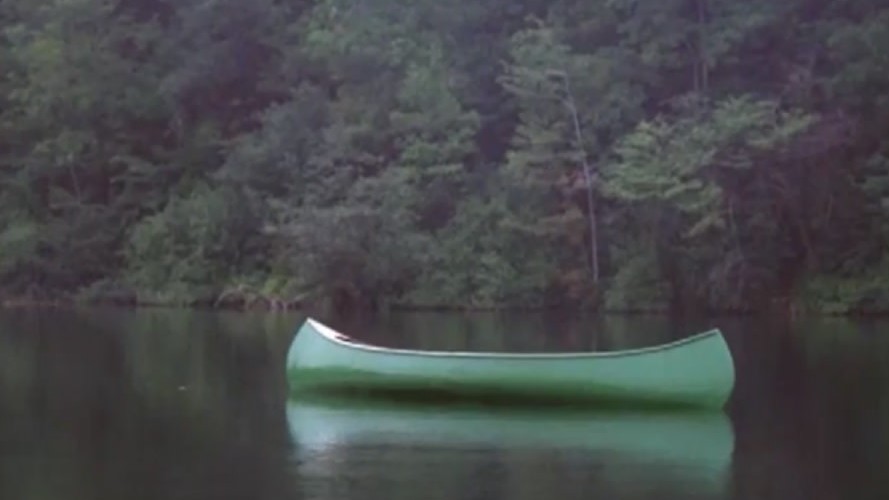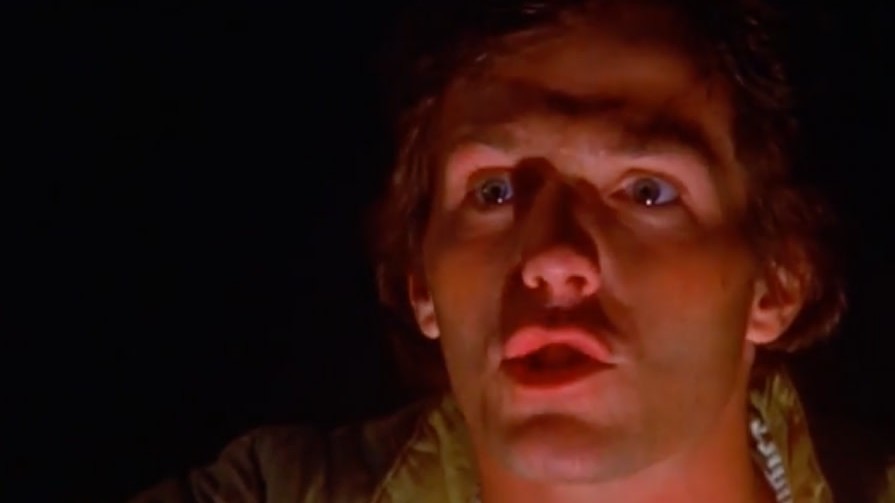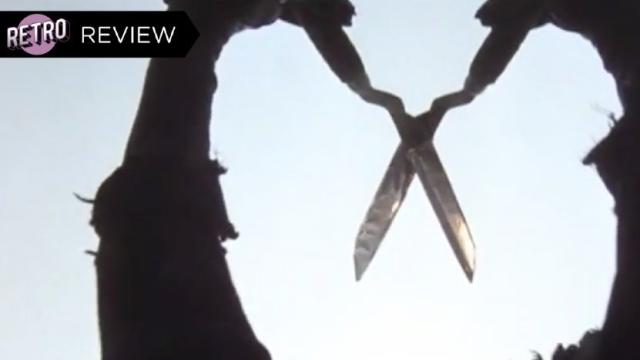Released in May 1981 — almost exactly a year after Friday the 13th — summer-camp slasher The Burning could have been written off as an attempt to capitalise on that film’s huge success. But despite similarities between the films, The Burning has some unique elements that’ve assured its own cult status.
First, just to get it out of the way, watching The Burning in 2021 carries with it the startling site of seeing Harvey Weinstein’s name in the credits; the film, which was produced by Harvey and Bob Weinstein’s then-fledgling Miramax, based its script on Harvey’s original idea. But there’s an asterisk appended to the “original” there — the future disgraced mogul actually drew upon a New York-area urban legend centering on a boogeyman named “Cropsey” to come up with the film’s villain. The legend even gets a proper framing within the film when a version of it gets shared around a campfire on two different occasions as the story progresses. (For more Cropsey-related urban folklore, check out the spooky 2009 documentary Cropsey, which digs into the true-crime tale behind the stories.)
[referenced id=”1087653″ url=”https://gizmodo.com.au/2018/02/13-horror-and-fantasy-movies-and-tv-shows-inspired-by-urban-legends/” thumb=”https://gizmodo.com.au/wp-content/uploads/2018/02/07/x5pfzfm4ytj3d4qcvwqg-300×169.jpg” title=”13 Horror And Fantasy Movies And TV Shows Inspired By Urban Legends” excerpt=”Eerie entertainment frequently takes inspiration from urban legends, with good reason – nothing’s scarier than a fantastical tale that still feels like it just might be true. TV shows like The X-Files and Supernatural have made liberal use of contemporary folklore over the years, and plenty of feature films have…”]
At any rate, The Burning, which was directed by Tony Maylam, follows a very traditional slasher structure: someone is horribly wronged in the past (in this case, a prank goes gruesomely awry five years before the movie’s main events), and then resurfaces to start violently picking off the perpetrators — or whoever is convenient, really — in the name of sweet revenge. Any number of 1980s slasher movies followed this same basic plot, including Friday the 13th, Terror Train, My Bloody Valentine, Happy Birthday to Me, Graduation Day, and Prom Night.
In The Burning, we see a group of campers taunt the resident caretaker, Cropsey (played by Lou David and a variety of stunt people), who’s apparently a massive creep — although probably not entirely deserving of having a slimy, wormy, leering skull-o’-lantern left at his bedside. When Cropsey awakens to behold this hideous sight, he knocks the candle-bedecked skull onto his blanket, and almost instantly he, and his entire shack, go up in flames. Hence, The Burning.

In case that doesn’t already set your appetite for the terrors to come, The Burning briefly takes us through Cropsey’s difficult and ultimately unsuccessful recovery, during which he’s openly regarded as a freak by medical personnel and only released after a series of unsuccessful skin grafts have failed to mend his now-monstrous appearance. (“Try not to blame anyone for what happened,” someone unhelpfully suggests…fat chance.) He heads straight to sleazy Times Square, where his impromptu date with a sex worker goes sideways when she catches sight of his misshapen face. His first instinct is to stab her to death with scissors — a weapon that foreshadows his later instrument of choice, an imposing set of garden shears.
Suddenly, there’s a scene change: a summer camp that’s apparently adjacent to the one where Cropsey got crispy, stuffed to the brim with horny teenage campers (including future stars Holly Hunter, Jason Alexander, and Fisher Stevens) who’re obsessed with getting laid and — uh oh — pulling pranks. The cast of The Burning is actually pretty likable; we don’t get to know any of them terribly well, but they feel like regular kids, and the movie allows for fun moments like an elaborate water fight, set to jaunty bluegrass music, as they’re blissfully paddling on a canoe trip that unfortunately leads them deep into Cropsey territory. There’s skinny dipping. There are Playboy jokes. Someone gets tagged in the butt by a BB gun. Etc.
Once Cropsey re-enters the narrative (the score by Rick Wakeman of the band Yes brings a lot of tension to his stalking-around-the-forest scenes, as do the de rigueur “killer’s POV” shots) and starts racking up the body count (the special effects are by Tom Savini, which means they are squishy, spurting, and excellent), there’s not much room left for characterisation. But The Burning’s signature massacre moment, in which Cropsey mangles an entire boatload of teens with finger-chopping and forehead-slashing flair (again, all hail Savini), delivers such splat-tastic satisfaction that the screen fades to red instead of black in its aftermath — an effective gimmick that’s repeated after the carnage is discovered by the rest of the campers.
[referenced id=”1470429″ url=”https://gizmodo.com.au/2020/09/a-tribute-to-horror-icon-tom-savinis-most-memorable-acting-roles/” thumb=”https://gizmodo.com.au/wp-content/uploads/2020/09/19/he6gc4pe83wtdjereyz5-300×162.jpg” title=”A Tribute to Horror Icon Tom Savini’s Most Memorable Acting Roles” excerpt=”Tom Savini is one of the greatest special effects make-up artists ever — a master of masks, creatures, prosthetics, fake blood, and screamingly gruesome ways to die. But he actually got his show-biz start as an actor, and over the years he’s tapped into those talents and popped up in…”]
There’s one especially notable story element that sets The Burning apart from Friday the 13th and most every slasher movie going back to Halloween and even Black Christmas: there’s no final girl character. Instead, we get a pair of young men in the form of heroic counselor Todd (Brian Matthews) and dorky camper Alfred (Fast Times at Ridgemont High’s Brian Backer), the latter of whom is presented as a Peeping Tom who’s also given the ability to “see” the killer, a trait usually reserved for the final girl (think Laurie Strode noticing Michael Myers lurking around pretty early in Halloween).
Without a final girl to subvert the ever-present male gaze and defeat the villain against the odds (as is the tradition in these settings), The Burning winds to a conclusion that’s uniquely masculine, in keeping with the energy that flows through from the start. The prank at the beginning is pulled off by a group of boys; Cropsey starts off killing women, at least until his victims start coming in couples and clumps; a lot of the movie revolves around dudes trying to score with girls who don’t necessarily welcome the attention; and the very capable female counselor played by Leah Ayres is whisked away to lead the survivors to safety rather than sticking around for the final fight.
All that doesn’t make The Burning feel misogynistic, at least no more so than other films like it from the early 1980s. Mostly, it sets up an interesting dynamic whereby the super-masculine Todd — who’s revealed to have participated in the skull incident five years prior — and the vaguely feminised Alfred must form a crack team to finally annihilate Cropsey, in a scene that involves a blowtorch, an ax, and those damn garden shears.

The final scene is also pretty notable; we get an epilogue featuring an entirely new set of campers listening to the Cropsey legend around a campfire. As the kids shiver at the story, the counselor breaks the fourth wall to include the audience in his warning: “Don’t look, he’ll see you! Don’t breathe, he’ll hear you, Don’t move, you’re dead!” The urban legend comes full circle as the story is passed on to a new group of listeners. We never did get The Burning II: Cropsey’s Revenge, but it’s implied here that his menacing presence in an ever-growing amount of frightened imaginations is probably payback enough.
The Burning starts streaming on Shudder March 1.
